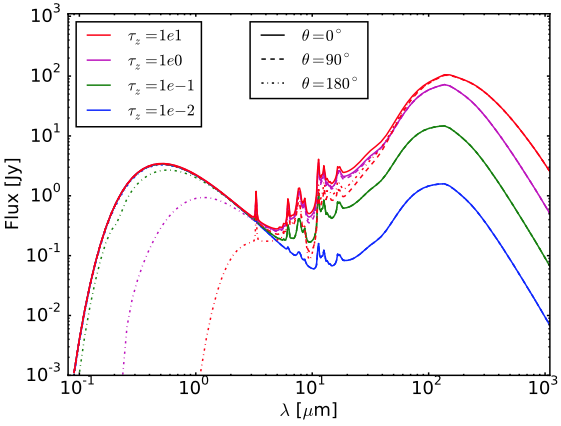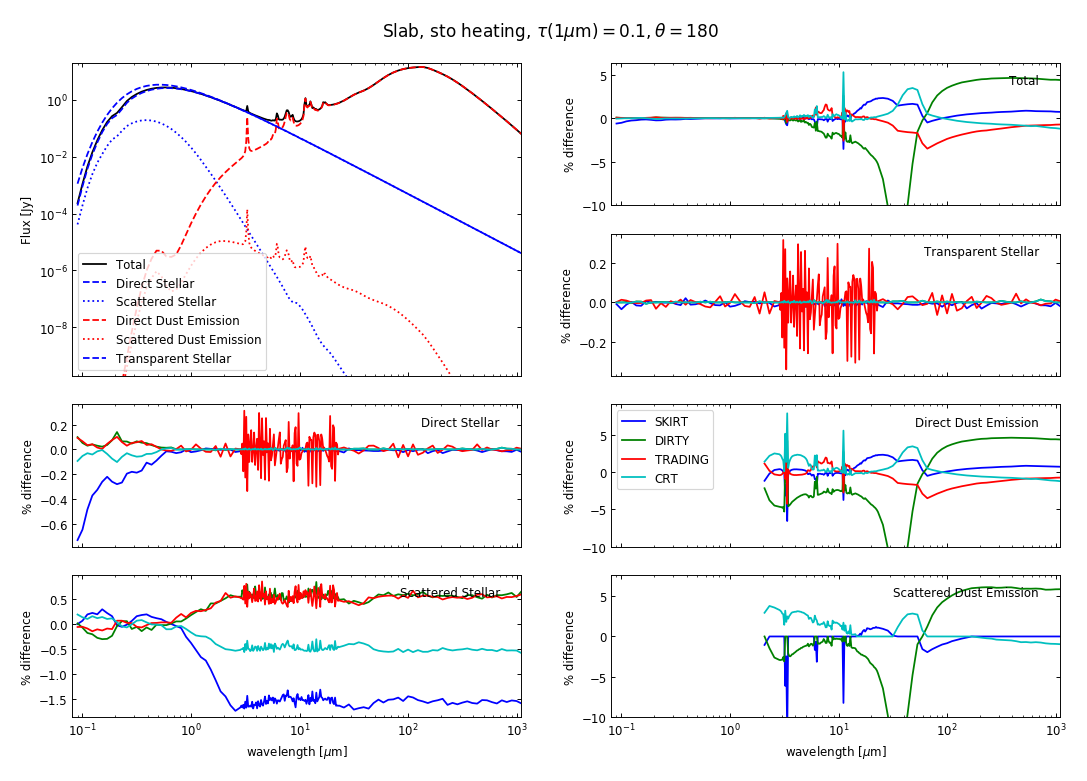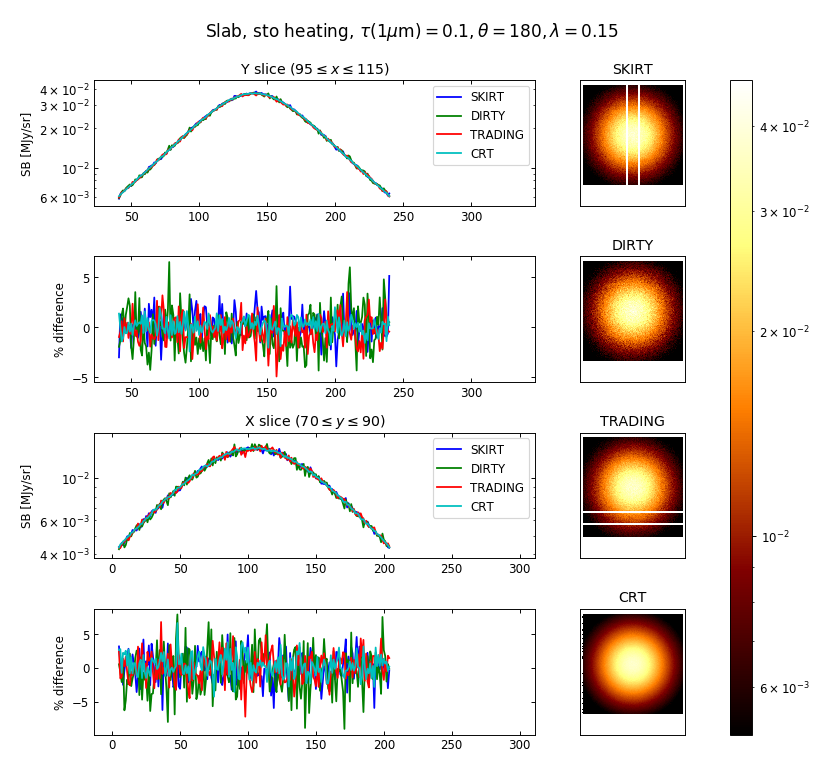Gordon et al. 2017 present a 3D continuum radiative transfer benchmark problem composed of a slab of dust with uniform density externally illuminated by a star. The aim is to test dust absorption, scattering, and emission, optionally taking into account stochastic heating of dust grains in non-LTE conditions (see Stochastically heated dust grains). The authors provide results produced by seven different radiative transfer codes, including SKIRT, for several optical depths and viewing angles.
| Publication | Gordon et al. 2017 [ADS] |
|---|---|
| Ski file | gordon_template.ski |
| Wavelength grid - basic | gordon_wavelengths_basic.dat |
| Wavelength grid - full | gordon_wavelengths_full.dat |
The diagram below on the left illustrates the benchmark setup including the viewing angles. The figure on the right shows the SEDs calculated taking into account stochastic heating for all optical depth values in the benchmark and for selected viewing angles.
 |  |
The figure below shows images produced by SKIRT for the \(\tau_z(1~\mu\text{m}) = 0.1\) case calculated taking into account stochastic heating for two representative wavelengths.
 |
Many more results and comparisons between the participating codes, including SKIRT, are presented in the benchmark paper (see References and downloads). The figures below present a comparison of the results produced by a recent version of SKIRT with those of three other codes participating in the benchmark for a specific benchmark configuration (stochastic heating, optical depth \(\tau_z(1~\mu\text{m}) = 0.1\), viewing angle \(\theta = 180^\circ\), and for the images, wavelength \(\lambda = 0.15\,\mu\mathrm{m}\)).
 |
 |
To perform this benchmark, download the ski file and wavelength data files provided above (References and downloads). Open the ski file in a text editor to adjust the following parameter values to a particular benchmark configuration:
| Parameter | XML element | XML attribute |
|---|---|---|
| Emission type | DustEmissionOptions | dustEmissionType |
| Wavelength grid | FileWavelengthGrid (5 times) | filename |
| Optical depth | OpticalDepthMaterialNormalization | opticalDepth |
| Number of dust grid bins along Z-axis | meshZ/ LinMesh | numBins |
| Number of pixels in the instrument frames | FullInstrument (7 times) | numPixelsX ; numPixelsY |
| Nr of photon packets | MonteCarloSimulation | numPackets |
The emission type can be one of two values, with a corresponding value for the wavelength grid (the spectral features resulting from stochastic heating would not be resolved on the lower resolution "basic" wavelength grid):
| Emission type | Wavelength grid | Description |
|---|---|---|
| Equilibrium | gordon_wavelengths_basic.dat | Assume dust grains to be in equilibrium with radiation field |
| Stochastic | gordon_wavelengths_full.dat | Take into account stochastic heating of smaller dust grains |
To ensure correct results for the benchmark configuration with the highest optical depth, the dust grid resolution must be increased. At the same time, the instrument resolution is increased to properly show the resulting surface brightness gradients. The appropriate values are:
| Optical depth | Dust grid bins along Z-axis | Pixels in instrument frames |
|---|---|---|
| 0.01 | 31 | 300 |
| 0.1 | 31 | 300 |
| 1 | 31 | 300 |
| 10 | 201 | 600 |
Finally, the number of photon packets should be adjusted depending on the benchmark configuration. The table below lists the values used for producing "official" benchmark results. For the higher optical depths, these values lead to long execution times.
| Optical depth | Equilibrium | Stochastic |
|---|---|---|
| 0.01 | 1e10 | 2e10 |
| 0.1 | 1e10 | 2e10 |
| 1 | 3e10 | 6e10 |
| 10 | 10e10 | 20e10 |
Finally, pass the (name of) the ski file to SKIRT as a single command line argument. At the end of the simulation run, SKIRT outputs data cubes and SEDs which can be compared to the original benchmark results.